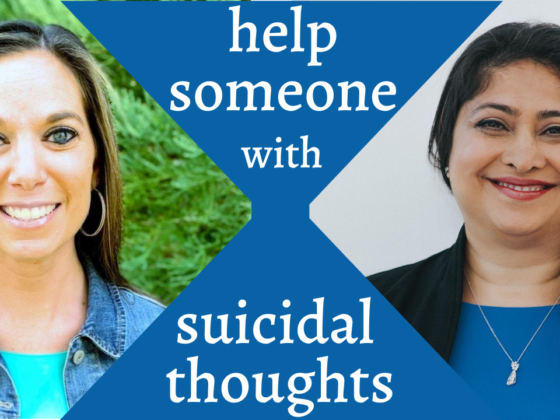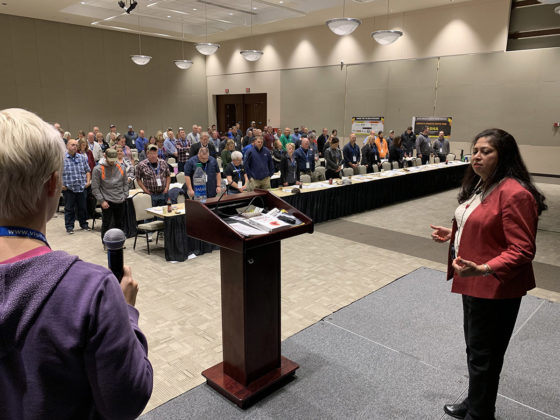With celebrity suicides, there is a lot in the news about it, and it usually leads to an increase in suicide rates in the community.
Many people feel sad and helpless when they hear about this kind of news. Do you? How do you cope? In this article series, I have tried to address some of the ways you can cope with or prevent suicide. In my last article, I shared some tips on How to Cope with Suicide in the Community. For this article, let me share what you need to know about suicide prevention and what you can do to prevent a friend or a family member who may be feeling suicidal.
Before I go into how let’s review how big the issue is how likely you are to encounter such news.
In 2016, nearly 45,000 lives have been lost to suicide in the USA alone.
According to the CDC, Centers for Disease Control, the suicide rates have increased by overall 25% in the US since 1999. It is more than a mental health concern as more than half of people (54%) who died by suicide did not have a known mental health condition. Although mental illness is a major risk factor, there are many other risk factors like loneliness, relationship issues, financial issues, and substance use, to name a few. Any stress that can cause strong emotions which you are not equipped to cope with can put you, and people you care about, at risk.
It is likely that someone around you may be feeling suicidal. When you see changes in a person that make you worry they might be suicidal, what can you do?
Knowing that you need to take action.
My friend Sheila asked me “What can I do? I feel sad and I want to do something but I am not a mental health professional.”
She is an avid swimmer. So I asked her, “If you saw someone drowning, would you do nothing because you are not a trained lifeguard?”
She replied, “No.”
You try to do what is in your capacity and try to call for help, right?
Similarly, when you notice changes in someone and they are not in their best form, you can do simple “CPR” by asking and listening in order to prevent suicide. I was moved by this story of a girl who shared how a teacher saved her from suicide by just asking and listening.
You may be worried that it is too sensitive of a topic to bring up.
My friend told me that death and suicide is a taboo topic in her culture so it is not talked about. She also avoids it as it is so hard and she is afraid; what if it gives someone ideas and increases the chances of suicide?
Well, the research indicates otherwise. Many people who are feeling that desperate, actually feel like no one cares. When they feel that you care, they may open up. The people who don’t feel suicidal respond right away and say, “I would never do that to my family or friends.” The people who are thinking of suicide, may or may not open up depending on the stage they are in. But if you don’t ask, they may not have an opportunity to open up. So, if you can save someone by asking, wouldn’t you?
Yes it is hard and you may not be fully equipped to deal with the severe situations, but at least you can try to make it easier for the person to be able to talk to someone who is trained.
Five Action Steps-
The National Suicide Prevention Lifeline has developed these five action steps for communicating with someone so that you could be the one to save a life and prevent suicide. These steps are:
- Ask
- Keep them safe
- Be there
- Help them connect
- Follow up
How do I start the conversation?
My friend asked me, how do I start the conversation? You can be just yourself and ask what comes naturally. In this one minute video, see what some people have shared how they would start the conversation: https://www.youtube.com/watch?v=7jTgOJ3tACI
You can also make a difference and save lives by connecting and listening. What if you don’t connect with people, care, and listen? You may continue to feel sad and helpless. If you do ask and listen, you can be the one who saves lives.
So starting today, make an intentional effort to connect with a friend that either you have not connected for some time or who just looks down. Ask and listen.
Don’t miss out! For tools to help reduce your stress and maximize your joy sent right to your email, sign up today. In addition, you will get an instant download of a 1-minute relaxation exercise for busy people.
Dr. Rozina
#1 Best Selling Author, Speaker, and Psychiatrist
www.drrozina.com
Join me on Facebook, Twitter, LinkedIn, or sign up for my newsletter
The Stress to Joy® program is available in
eBook,
I share many tools and techniques that I have found to be helpful. They are not intended to replace treatments. Please seek treatment from licensed medical or health professionals as needed. I change all names for privacy.




Leave a Reply
You must belogged in to post a comment.